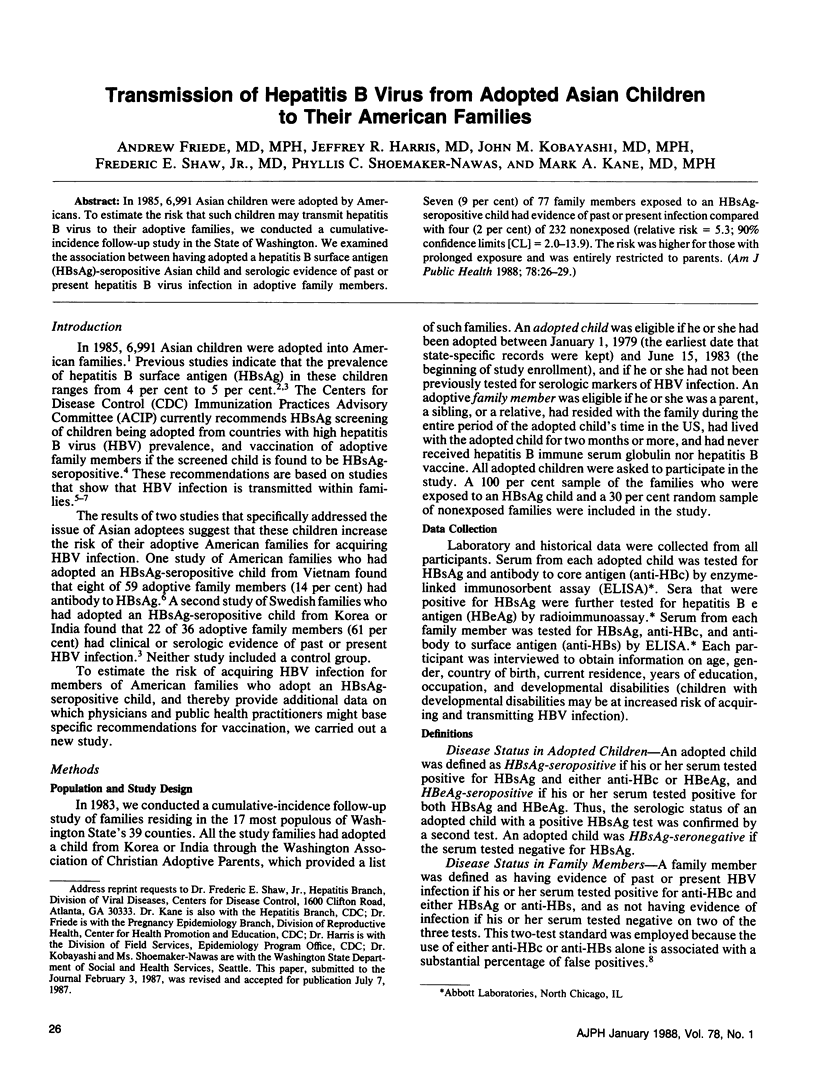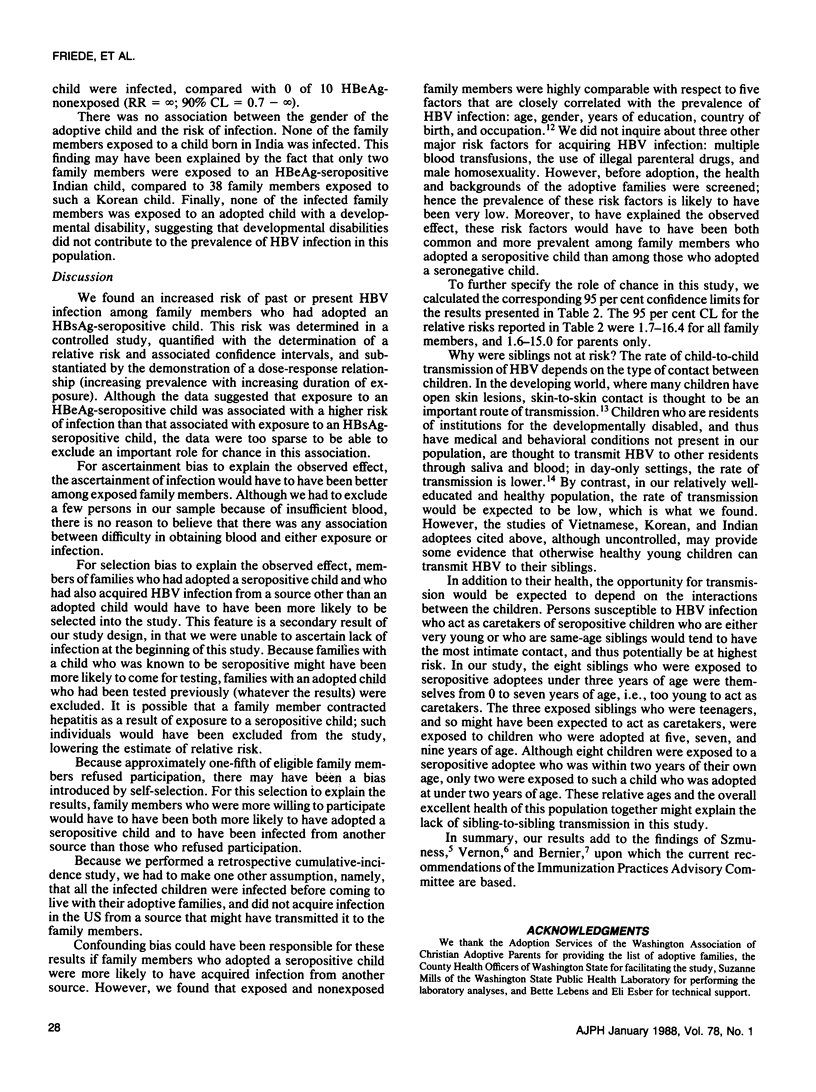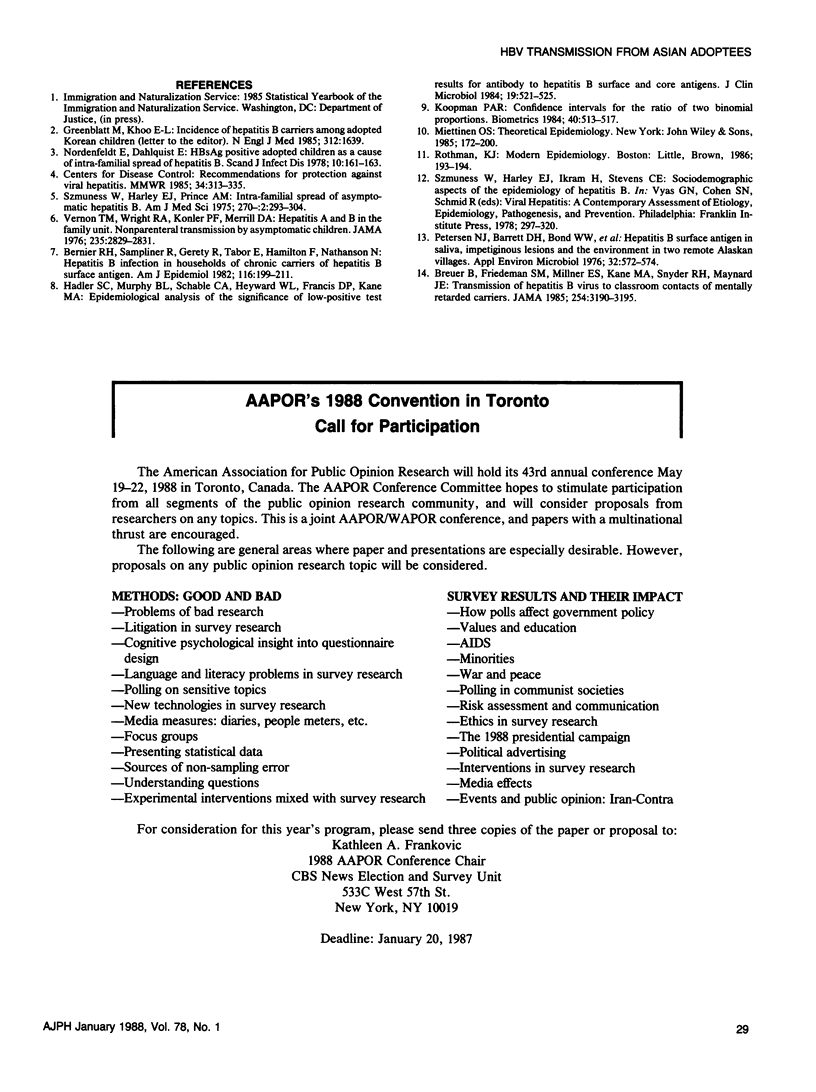Abstract
In 1985, 6,991 Asian children were adopted by Americans. To estimate the risk that such children may transmit hepatitis B virus to their adoptive families, we conducted a cumulative-incidence follow-up study in the State of Washington. We examined the association between having adopted a hepatitis B surface antigen (HBsAg)-seropositive Asian child and serologic evidence of past or present hepatitis B virus infection in adoptive family members. Seven (9 per cent) of 77 family members exposed to an HBsAg-seropositive child had evidence of past or present infection compared with four (2 per cent) of 232 nonexposed (relative risk = 5.3; 90% confidence limits [CL] = 2.0-13.9). The risk was higher for those with prolonged exposure and was entirely restricted to parents.
Full text
PDF



Selected References
These references are in PubMed. This may not be the complete list of references from this article.
- Bernier R. H., Sampliner R., Gerety R., Tabor E., Hamilton F., Nathanson N. Hepatitis B infection in households of chronic carriers of hepatitis B surface antigen: factors associated with prevalence of infection. Am J Epidemiol. 1982 Aug;116(2):199–211. doi: 10.1093/oxfordjournals.aje.a113406. [DOI] [PubMed] [Google Scholar]
- Breuer B., Friedman S. M., Millner E. S., Kane M. A., Snyder R. H., Maynard J. E. Transmission of hepatitis B virus to classroom contacts of mentally retarded carriers. JAMA. 1985 Dec 13;254(22):3190–3195. [PubMed] [Google Scholar]
- Greenblatt M., Khoo E. C. Incidence of hepatitis B carriers among adopted Korean children. N Engl J Med. 1985 Jun 20;312(25):1639–1639. doi: 10.1056/NEJM198506203122514. [DOI] [PubMed] [Google Scholar]
- Hadler S. C., Murphy B. L., Schable C. A., Heyward W. L., Francis D. P., Kane M. A. Epidemiological analysis of the significance of low-positive test results for antibody to hepatitis B surface and core antigens. J Clin Microbiol. 1984 Apr;19(4):521–525. doi: 10.1128/jcm.19.4.521-525.1984. [DOI] [PMC free article] [PubMed] [Google Scholar]
- Nordenfelt E., Dahlquist E. HBsAg positive adopted children as a cause of intrafamilial spread of hepatitis B. Scand J Infect Dis. 1978;10(3):161–163. doi: 10.3109/inf.1978.10.issue-3.01. [DOI] [PubMed] [Google Scholar]
- Petersen N. J., Barrett D. H., Bond W. W., Berquist K. R., Favero M. S., Bender T. R., Maynard J. E. Hepatitis B surface antigen in saliva, impetiginous lesions, and the environment in two remote Alaskan villages. Appl Environ Microbiol. 1976 Oct;32(4):572–574. doi: 10.1128/aem.32.4.572-574.1976. [DOI] [PMC free article] [PubMed] [Google Scholar]
- Szmuness W., Harley E. J., Prince A. M. Intrafamilial spread of asymptomatic hepatitis B. Am J Med Sci. 1975 Sep-Oct;270(2):293–304. doi: 10.1097/00000441-197509000-00009. [DOI] [PubMed] [Google Scholar]
- Vernon T. M., Wright R. A., Kohler P. F., Merrill D. A. Hepatitis A and B in the family unit. Nonparenteral transmission by asymptomatic children. JAMA. 1976 Jun 28;235(26):2829–2831. [PubMed] [Google Scholar]


